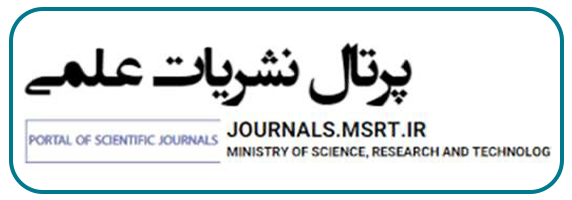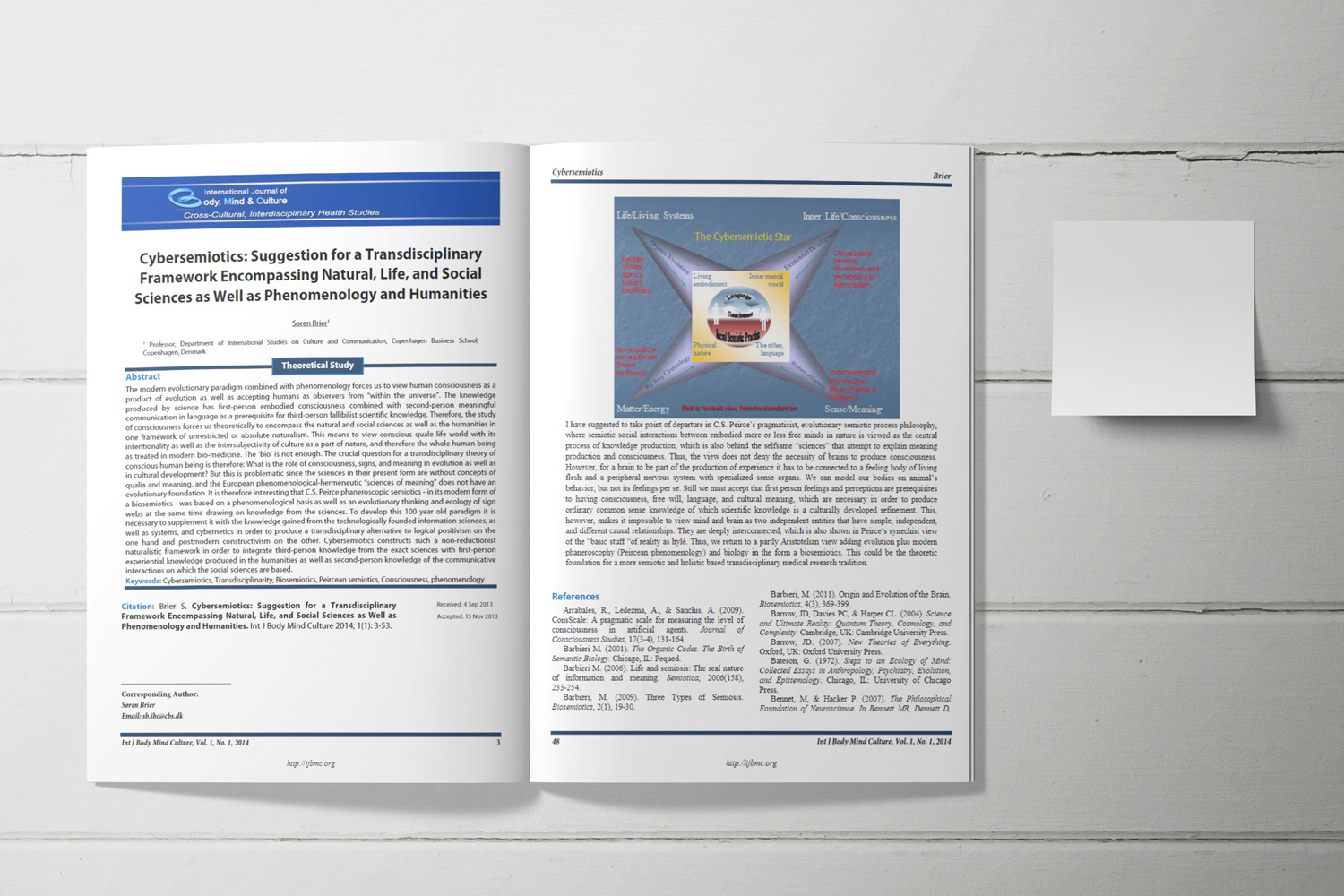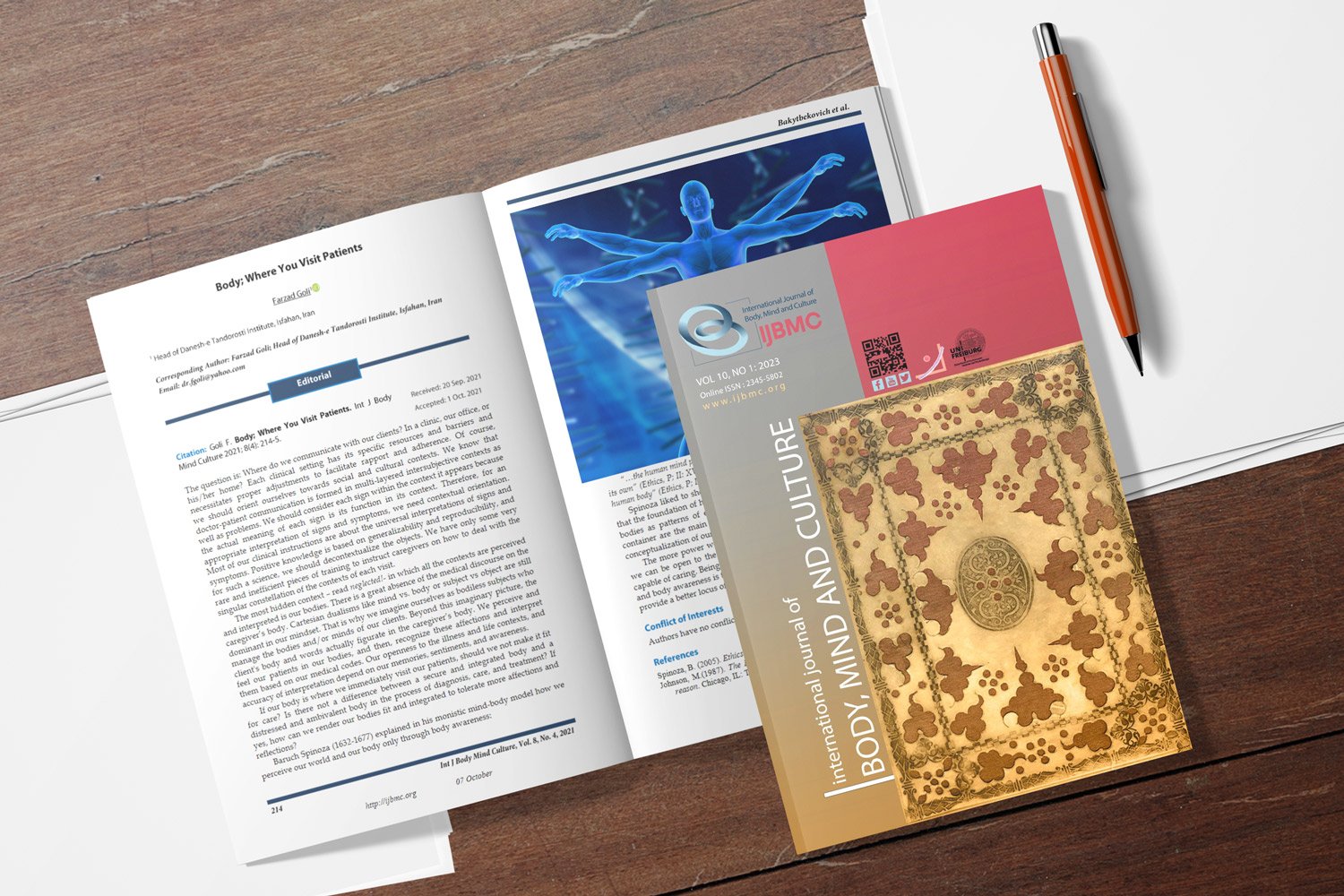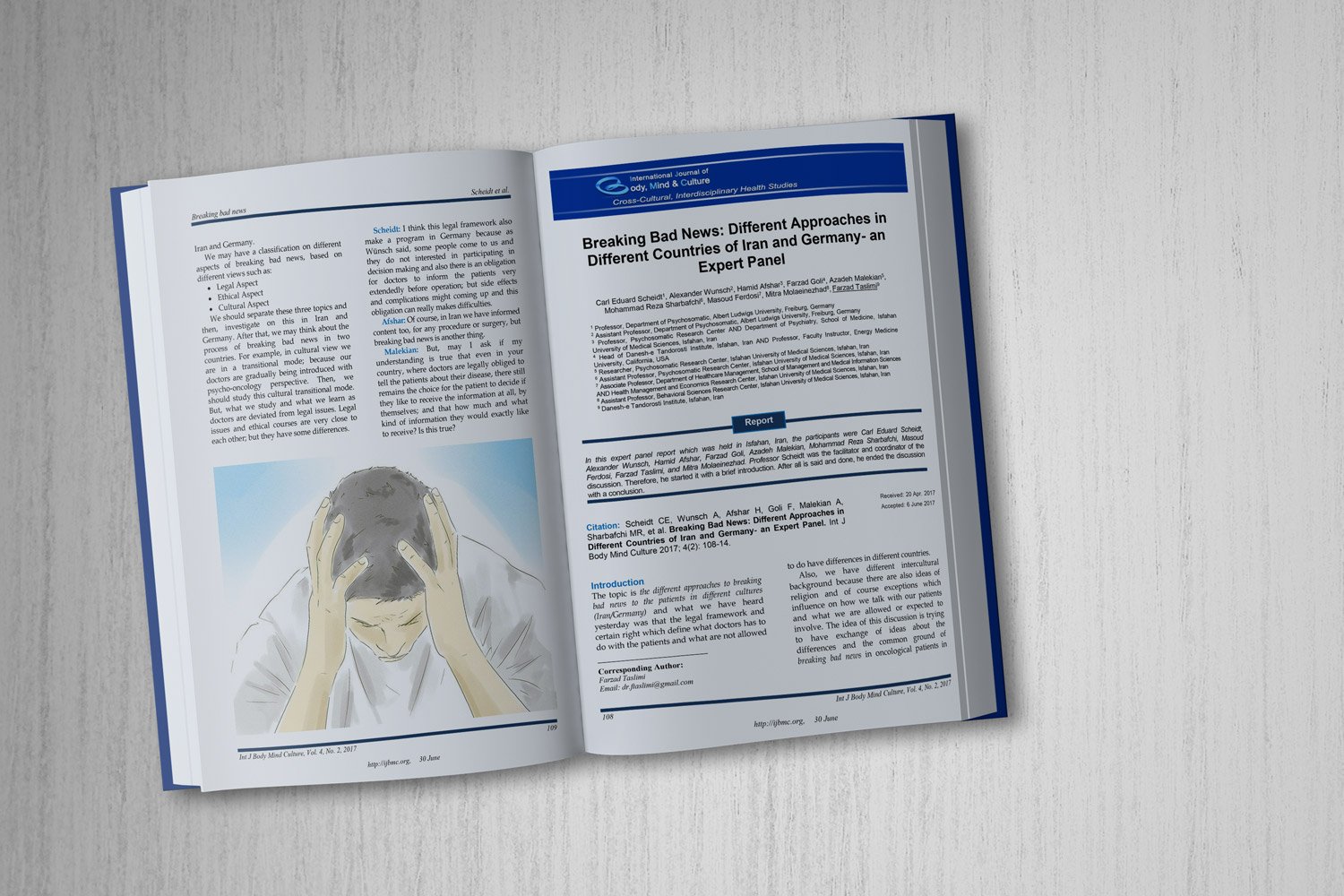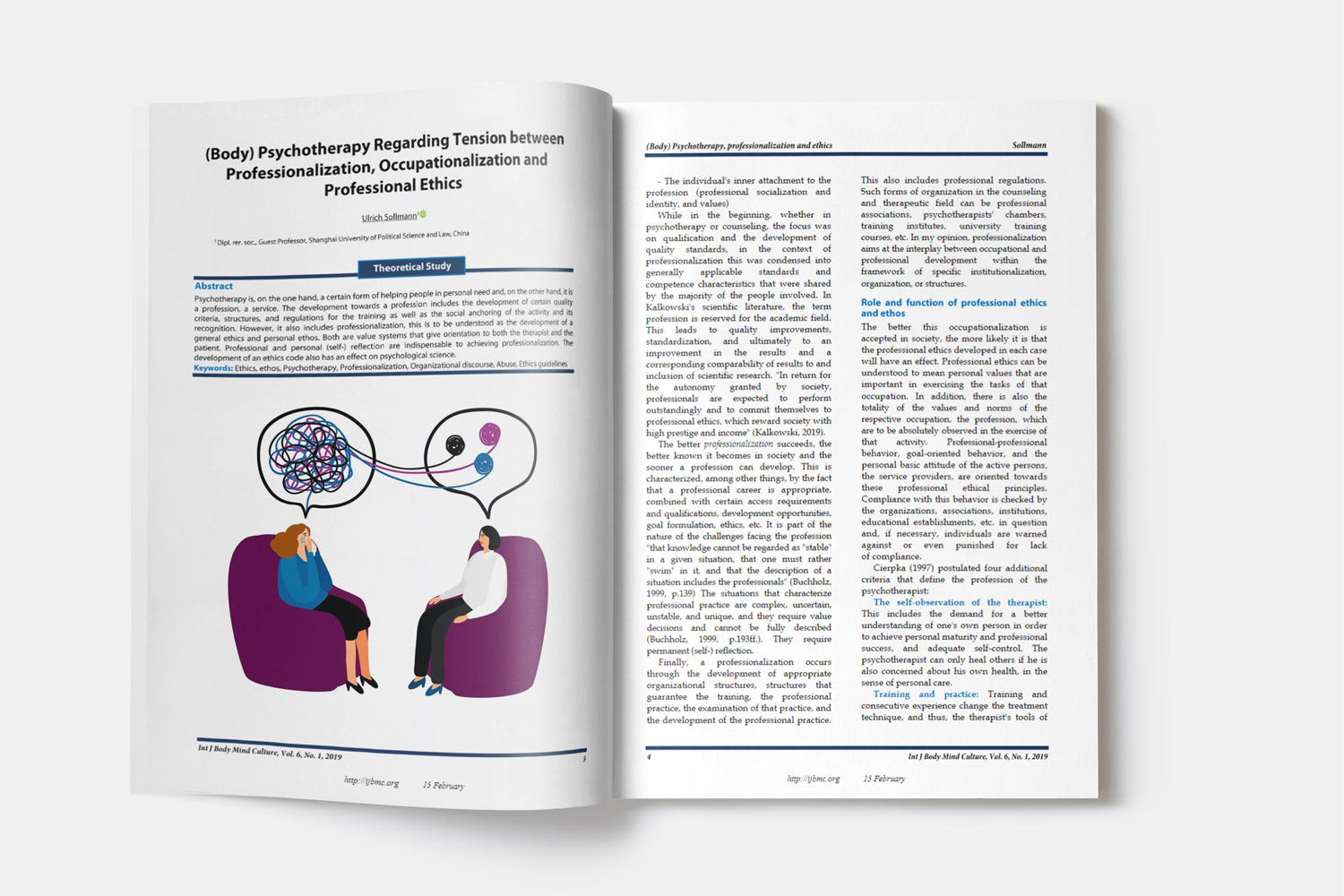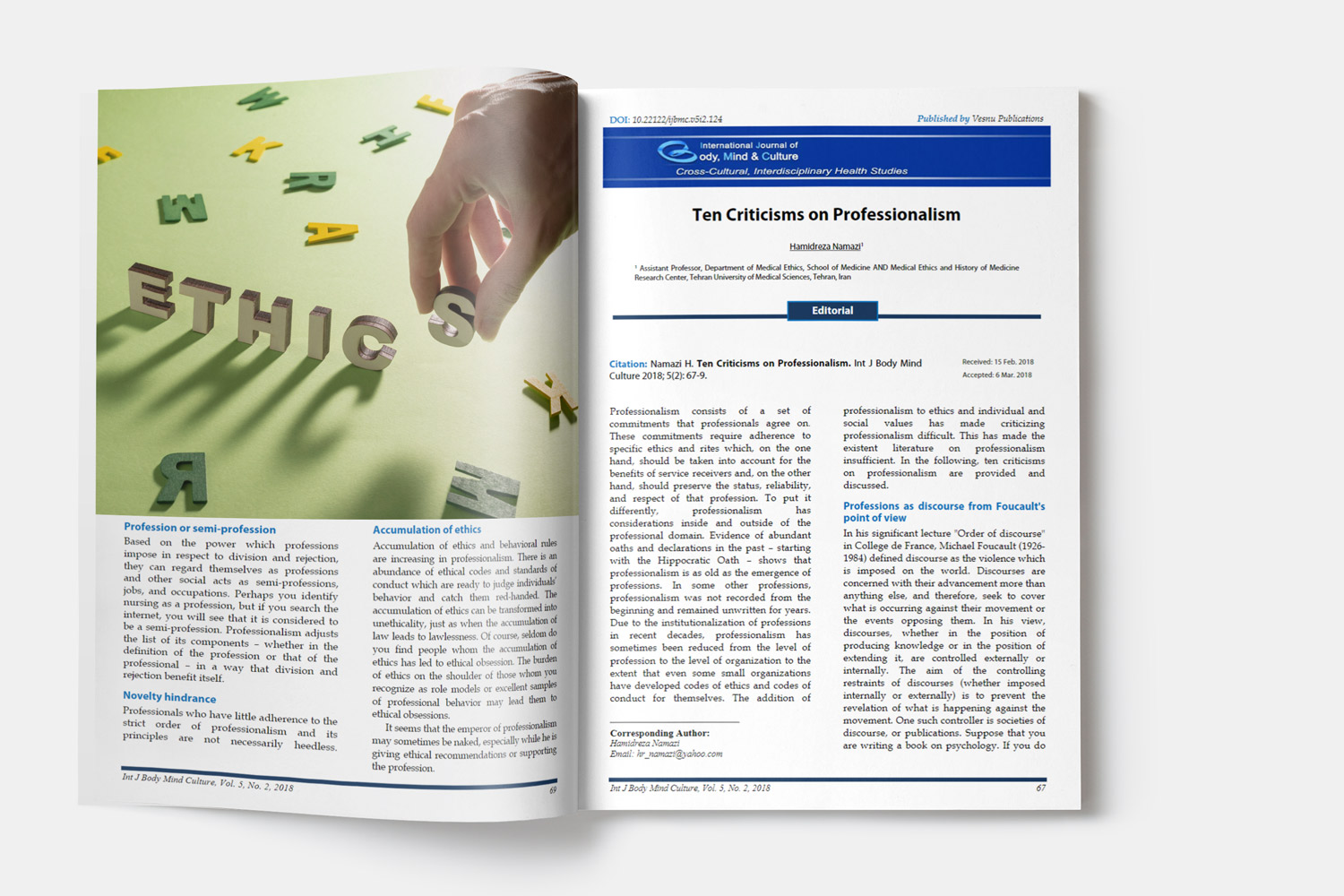The Role of Perceived Parenting Styles and Positive Thinking in Predicting Gender Identity of Iranian Female Adolescents
Perceived parenting styles and gender identity
Downloads
Background: This study was aimed to investigate the relationship between perceived parental style and positive thinking with gender identity of Iranian female adolescents.
Methods: This was a correlational research. Statistical population included all female adolescents of Tehran, Iran (2018 academic year) and its statistical sample consisted of 384 participants which were selected through cluster sampling method. The data were gathered using Schertzer et al.’s Gender Role Identity Scale (GRIS), Robbins’ perception of parenting styles (POPS), and Ingram and Wisnicki’s automatic thoughts questionnaire (ATQ). Analysis of data was conducted by Pearson correlation coefficient and linear multiple regression using SPSS software.
Results: The mean of feminine characteristics among the girls was higher than their masculine characteristics (P > 0.050). Furthermore, there was a positive significant relationship between father and mother warmth and positive thinking with feminine and masculine gender identity of female adolescents (P < 0.050). The result of regression analysis showed that the four variables of mother warmth (β = 0.40, P < 0.001), father warmth (β = 0.23, P < 0.001), positive thinking (β = 0.21, P < 0.001), and mother support (β = 0.21, P < 0.001) could predict gender identity.
Conclusion: According to the findings, it can be concluded that mother and father warmth, positive thinking, and mother support could predict gender identity. Therefore, based on our findings, we discuss the importance of perceived parenting style and positive thinking.
Downloads
Aitken, M., Steensma, T. D., Blanchard, R., VanderLaan, D. P., Wood, H., Fuentes, A. et al. (2015). Evidence for an altered sex ratio in clinic-referred adolescents with gender dysphoria. J Sex Med, 12 (3), 756-763. doi:S1743-6095(15)30967-X [pii];10.1111/jsm.12817 [doi]. Retrieved from PM:25612159
Aminzadeh, M. S., & Bolghan-Abadi, M. (2022). Effectiveness of the compassion-focused therapy on self-criticism and marital intimacy among couples. Int J Body Mind Culture, 9(4), 335-341. doi: 10.22122/ijbmc.v9i4.395 [doi].
Bagheri Charook, A., Towhidi, A., & Tajrobehkar, M. (2019). The Effect of Self-Determination, Academic Adjustment, and Positive Thinking on Academic Performance with the Mediation of Achievement Goals. Positive Psychology Research, 5(2), 65-84. doi: 10.22108/ppls.2019.117257.1748 [doi].
Basson, M. (2018). Gender and family structure as moderators in the relationship between parenting styles and identity development among adolescents [MSc Thesis]. Bloemfontein, South Africa: University of the Free State.
Beyers, W., & Goossens, L. (2008). Dynamics of perceived parenting and identity formation in late adolescence. J Adolesc., 31(2), 165-184. doi:S0140-1971(07)00036-X [pii];10.1016/j.adolescence.2007.04.003 [doi]. Retrieved from PM:17629552
Chen, M., Fuqua, J., & Eugster, E. A. (2016). Characteristics of referrals for gender dysphoria over a 13-year period. J Adolesc.Health, 58(3), 369-371. doi:S1054-139X(15)00676-X [pii];10.1016/j.jadohealth.2015.11.010 [doi]. Retrieved from PM:26903434
Erikson, E. H. (1968). Identity Youth and Crisis. New york, NY: WW Norton.
Ozturk, E. A., & Yalcin, I. A. (2021). Relationship Between Parenting Practices and Children's Screen Time During the COVID-19 Pandemic in Turkey. J Pediatr.Nurs, 56, 24-29. doi:S0882-5963(20)30613-8 [pii];10.1016/j.pedn.2020.10.002 [doi]. Retrieved from PM:33181369
Foulkes, L., & Blakemore, S. J. (2018). Studying individual differences in human adolescent brain development. Nat.Neurosci, 21(3), 315-323. doi:10.1038/s41593-018-0078-4 [pii];10.1038/s41593-018-0078-4 [doi]. Retrieved from PM:29403031
Gale-Ross, R., Baird, A., & Towson, S. (2009). Gender role, life satisfaction, and wellness: androgyny in a southwestern Ontario sample. Can.J Aging., 28(2), 135-146. doi:S0714980809090187 [pii];10.1017/S0714980809090187 [doi]. Retrieved from PM:19860972
Hollenstein, T., & Lougheed, J. P. (2013). Beyond storm and stress: Typicality, transactions, timing, and temperament to account for adolescent change. Am.Psychol, 68(6), 444-454. doi:2013-27499-001 [pii];10.1037/a0033586 [doi]. Retrieved from PM:23915399
Ingram, R. E., & Wisnicki, K. S. (1988). Assessment of positive automatic cognition. J Consult.Clin.Psychol, 56(6), 898-902. doi:10.1037//0022-006x.56.6.898 [doi]. Retrieved from PM:3204200
Kail, R. V., & Cavanaugh, J. C. (2015). Human development: A life-span view. Boston, MA: Cengage Learning.
Kaniušonytė, G., Žukauskienė, R. (2018). Relationships with parents, identity styles, and positive youth development during the transition from adolescence to emerging adulthood. Emerging Adulthood, 6(1), 42-52. doi:10.1177/2167696817690978. [doi].
Kim, M. A., Park, E., & Ko, S. H. (2013). A typology: older women and gender role identity. Korean J Adult Nurs, 25(3), 289-297. doi: 10.7475/kjan.2013.25.3.289 [doi].
Korpaisarn, S., & Safer, J. D. (2019). Etiology of Gender Identity. Endocrinol.Metab.Clin.North Am., 48(2), 323-329. doi:S0889-8529(19)30002-7 [pii];10.1016/j.ecl.2019.01.002 [doi]. Retrieved from PM:31027542
Lin, Y. C., & Billingham, R. E. (2014). Relationship between parenting styles and gender role identity in college students. Psychol Rep., 114(1), 250-271. doi:10.2466/21.09.PR0.114k13w4 [doi]. Retrieved from PM:24765724
Luciana, M. (2013). Adolescent brain development in normality and psychopathology. Dev.Psychopathol., 25(4 Pt 2), 1325-1345. doi:S0954579413000643 [pii];10.1017/S0954579413000643 [doi]. Retrieved from PM:24342843
Marcia, J. E. (1966). Development and validation of ego-identity status. J Pers Soc Psychol, 3(5), 551-558. doi:10.1037/h0023281 [doi]. Retrieved from PM:5939604
McLean, K. C., Lilgendahl, J. P., Fordham, C., Alpert, E., Marsden, E., Szymanowski, K. et al. (2018). Identity development in cultural context: The role of deviating from master narratives. J Pers, 86 (4), 631-651. doi:10.1111/jopy.12341 [doi]. Retrieved from PM:28833186
Michalek-Kwiecien, J. (2016). Relations with parents and identity statuses in the relational domain in emerging adults. Curr Issues Pers Psychol, 4(3), 146-154. doi:10.5114/cipp.2016.61757 [doi].
Olson-Kennedy, J., Cohen-Kettenis, P. T., Kreukels, B. P., Meyer-Bahlburg, H. F., Garofalo, R., Meyer, W. et al. (2016). Research priorities for gender nonconforming/transgender youth: gender identity development and biopsychosocial outcomes. Curr Opin.Endocrinol.Diabetes Obes., 23(2), 172-179. doi:10.1097/MED.0000000000000236 [doi]. Retrieved from PM:26825472
Ozturk, E. A., & Yalcin, I. A. (2021). Relationship Between Parenting Practices and Children's Screen Time During the COVID-19 Pandemic in Turkey. J Pediatr.Nurs, 56, 24-29. doi:S0882-5963(20)30613-8 [pii];10.1016/j.pedn.2020.10.002 [doi]. Retrieved from PM:33181369
Piaget, J. (1983). Piaget's Theory. In P. H. Mussen, & W. Kessen (Eds.), Handbook of Child Psychology: History, Theory, and Methods (pp. 103-126). New York, NY: John Wiley.
Progovac, A. M., Cook, B. L., Mullin, B. O., McDowell, A., Sanchez, R. M., Wang, Y. et al. (2018). Identifying Gender Minority Patients' Health And Health Care Needs In Administrative Claims Data. Health Aff.(Millwood.), 37(3), 413-420. doi:10.1377/hlthaff.2017.1295 [doi]. Retrieved from PM:29505378
Quilliam, S. 2012. DK essential managers: Positive thinking. New York, NY: Penguin.
Rageliene, T. (2016). Links of Adolescents Identity Development and Relationship with Peers: A Systematic Literature Review. J Can.Acad.Child.Adolesc.Psychiatry., 25(2), 97-105. doi:ccap25_p0097 [pii]. Retrieved from PM:27274745
Robbins, R. J. (199)4. An assessment of perceptions of parental autonomy support and control: Child and parent correlates. [Dissertation]. Rochester, New York: University of Rochester.
Rogers, L. O., Scott, M. A., & Way, N. (2015). Racial and gender identity among Black adolescent males: an intersectionality perspective. Child.Dev., 86(2), 407-424. doi:10.1111/cdev.12303 [doi]. Retrieved from PM:25363136
Ruppin, U., & Pfafflin, F. (2015). Long-Term Follow-Up of Adults with Gender Identity Disorder. Arch.Sex Behav., 44(5), 1321-1329. doi:10.1007/s10508-014-0453-5 [doi]. Retrieved from PM:25690443
Saei Ghare, N. M., Ramezani, T. F., Ahmadi, F., Alavi, M. H., & Ozgoli, G. (2019). Threats to Feminine Identity as the Main Concern of Iranian Adolescents with Polycystic Ovary Syndrome: A Qualitative Study. J Pediatr.Nurs, 49, e42-e47. doi:S0882-5963(18)30561-X [pii];10.1016/j.pedn.2019.08.010 [doi]. Retrieved from PM:31645273
Schertzer, S., Laufer, D., Silvera, D., & McBride, J. (2008). A cross-cultural validation of a gender role identity scale in marketing. International Marketing Review, 25, 312-323.
Sigelman, C. K., & Rider, E. A. (2012). Human Development Across the Life Span. Belmont, CA: Wadsworth Cengage Learning.
Simon, L., Zsolt, U., Fogd, D., & Czobor, P. (2011). Dysfunctional core beliefs, perceived parenting behavior and psychopathology in gender identity disorder: A comparison of male-to-female, female-to-male transsexual and nontranssexual control subjects. J Behav.Ther.Exp.Psychiatry., 42(1), 38-45. doi:S0005-7916(10)00081-9 [pii];10.1016/j.jbtep.2010.08.004 [doi]. Retrieved from PM:21074005
Sinkler, N. (2012). What Factors Contribute to the Identity Development of International Adoptees?. [MSc Thesis] St. Catherine University.
Situmorang, D. D. B., & Salim, R. M. A. (2021). Perceived parenting styles, thinking styles, and gender on the career decision self-efficacy of adolescents: how & why? Heliyon, 7(3), e06430.
Tanhaye Reshvanloo, F., & Talepasand, S. (2018). Factor Structure and Psychometric Properties of Perceptions of Parents Scale (POPS) in High school students. Rooyesh-e- Ravanshenasi, 7(9), 265-290. doi: 10.29252/Rooyesh [doi].
Tu, B. (2022). The Effect of Different Paternal Parenting Styles have on Daughter's Gender Identity and Gender Role Attitudes Formation. Proceedings of the 2022 5th International Conference on Humanities Education and Social Sciences (ICHESS 2022) Atlantis Press.
Turban, J. L., & Ehrensaft, D. (2018). Research Review: Gender identity in youth: treatment paradigms and controversies. J Child.Psychol Psychiatry., 59(12), 1228-1243. doi:10.1111/jcpp.12833 [doi]. Retrieved from PM:29071722
Waterman, A. S. (2020). "Now what do I do?": Toward a conceptual understanding of the effects of traumatic events on identity functioning. J Adolesc., 79, 59-69. doi:S0140-1971(19)30189-7 [pii];10.1016/j.adolescence.2019.11.005 [doi]. Retrieved from PM:31901704
Copyright (c) 2023 International Journal of Body, Mind and Culture

This work is licensed under a Creative Commons Attribution-NonCommercial 4.0 International License.






